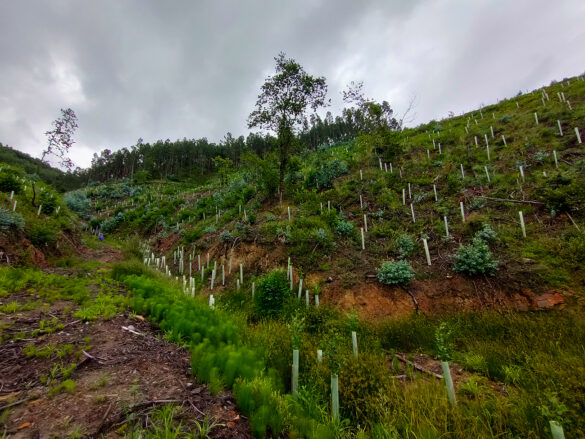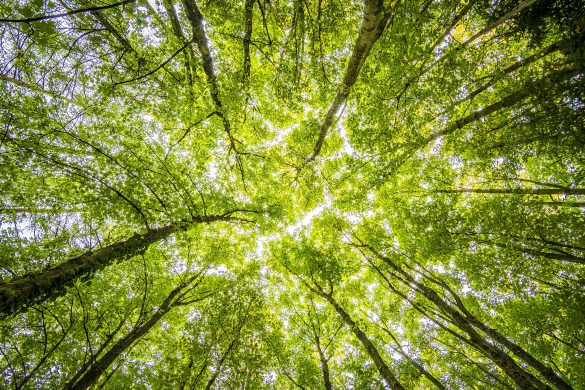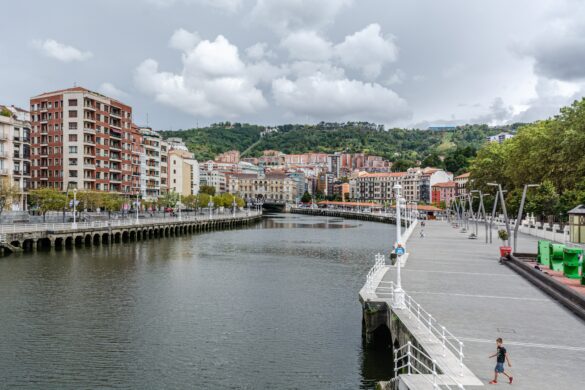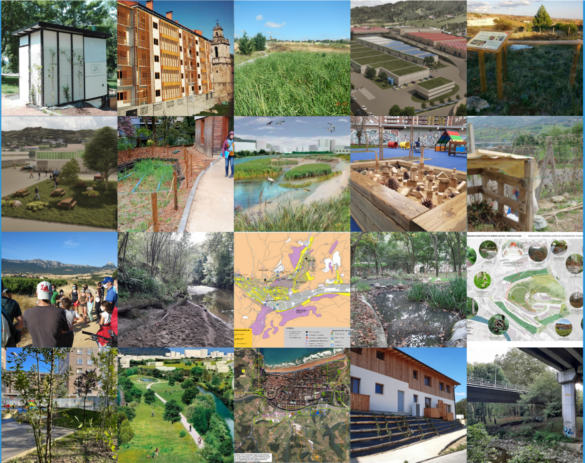Restoring San Lorenzo Marshes and increasing climate change resilience in Txingudi Bay
The Bay of Txingudi, located at the confluence of three municipalities – Irún and Hondarribia in Spain’s Basque Country, and Hendaye in France – is an area rich in biodiversity, culture, and infrastructure. However, like many coastal regions worldwide, it faces growing challenges from climate change, particularly rising sea levels and increased storm surges. In response, a significant environmental restoration project is underway to reclaim the San Lorenzo marshes. The restoration of the San Lorenzo marshes is part of a broader commitment by the Basque Country to enhance its resilience to climate change. This ambitious effort not only seeks to restore the marshland’s ecological integrity but also to support its role as a natural defence against climate impacts.
The Background: A Landscape Transformed
Historically, the marshes of Txingudi estuary were utilized for farming and development, leading to the degradation of natural habitats. Over time, construction projects, such as sluice gates and agricultural expansion, altered the natural flow of water into the estuary, affecting the delicate balance of its ecosystems. As a result, these artificial interventions limited the marshes’ ability to adapt to rising sea levels and diminished their capacity to act as a protective barrier for inland areas.
Compounding these challenges is the region’s proximity to crucial infrastructure, including the Donostia/San Sebastián airport, railway lines, and marinas, making it a highly urban area with competing demands for land use. The San Lorenzo lagoon has suffered from these impacts, needing urgent restoration to preserve its ecological value and increase its resilience to the ever-growing threats posed by climate change.
The Challenge: Climate Change and Rising Sea Levels
Rising sea levels, coastal erosion and storm surges, pose a significant threat to the Txingudi Bay region. Given that 75% of the Basque Country’s population resides in coastal areas, the risk to local communities, infrastructure, and ecosystems is substantial. Txingudi Bay, situated on the Bidasoa estuary along the French-Spanish border, is particularly vulnerable due to its high population density and coastal location.
This vulnerability emphasizes the urgency of the San Lorenzo marsh restoration project. The intervention not only aims to mitigate the impacts of rising sea levels but also to strengthen the marshland’s ecological functions, ensuring it can continue to serve as a natural buffer against coastal threats.
The Solution: Restoring the Marshes of Txingudi Bay
The San Lorenzo marsh restoration will span 5.5 hectares, transforming previously degraded agricultural land back into a thriving wetland ecosystem. This project, which integrates both ecological and technological solutions, focuses on restoring the estuarine dynamics and increasing the floodable area of the marsh. Key interventions include:
- Eliminating 50,000 m³ of agricultural land: This will return the land to its natural marshland state, reviving the original marsh ecosystem and enhancing its ability to store blue carbon, a critical factor in fighting climate change.
- Removing sluice gates: This step will restore the natural inflow of brackish water into the lagoon, reviving its hydrological processes and improving biodiversity.
- Clearing tree barriers: This will connect the current lagoon with the newly restored area, facilitating better water flow and habitat continuity for wildlife.
- Site preparations: Modifications, such as removing paved surfaces and adjusting power lines, will ensure the restoration process is smooth and minimizes human interference.
One of the most innovative aspects of the project is the use of advanced monitoring systems. Sensors and video metric devices are being installed to study tidal dynamics and assess flood risks. These systems will provide invaluable data, not just for the restoration of the marshes, but for shaping future climate adaptation strategies. Furthermore, the project includes augmented reality tools for citizen engagement, enabling the local population to visualize and understand the benefits of restoration efforts.
Restoring Biodiversity and Resilience
At the heart of this initiative is the goal to significantly enhance biodiversity in Txingudi Bay. By restoring natural flows and removing man-made barriers, the marsh will once again become a thriving habitat for birds and other wildlife. As part of the Natura 2000 Network, the San Lorenzo marshes are a critical site for bird conservation, and their restoration will create the ideal conditions for these species to thrive. To protect these sensitive ecosystems, human access to the restored areas will be restricted, with natural barriers constructed from excavated soil to separate bird habitats from public spaces, such as the adjacent cycle lane.
A Broader Commitment to Environmental Resilience
The restoration of the San Lorenzo marshes is part of a broader commitment by the Basque Country to enhance its resilience to climate change. This includes reconnecting marsh and wetland areas, restoring estuarine dynamics, and integrating these efforts into local and regional governance. Collaborative agreements among various authorities are being established to ensure that this project, along with future initiatives, can be implemented efficiently and effectively.
Although the restoration project is still in its early stages, data collection and environmental monitoring are already underway. As more information becomes available, it will inform adaptive management strategies and guide future restoration efforts across the region.
Building a Sustainable Future
The San Lorenzo marsh restoration project is a powerful example of how ecological restoration can serve as a cornerstone of climate adaptation. By returning degraded land to its natural state, Txingudi Bay will not only become more resilient to rising sea levels and other climate-related impacts but will also offer a revitalized habitat for biodiversity, benefiting both wildlife and the local community. As the Basque Country continues to pioneer initiatives like this, it sets a benchmark for coastal regions worldwide seeking sustainable solutions to the growing threats posed by climate change.
More information about the Project:









